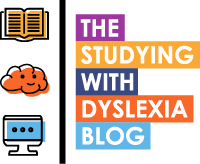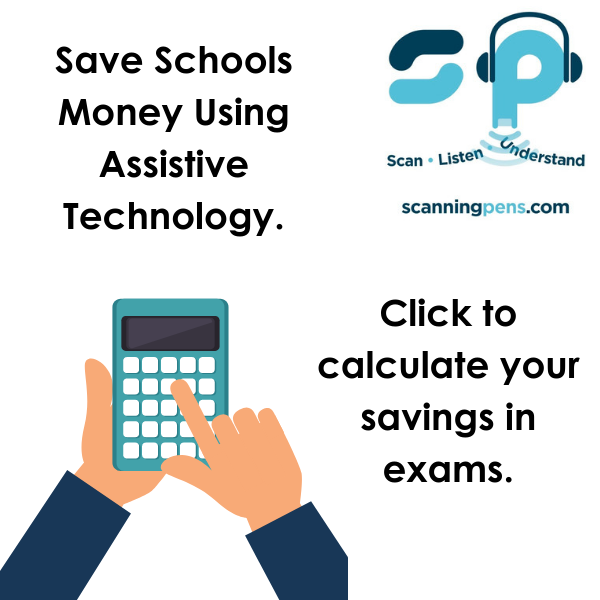Last month I ran a competition to find an inspiring example of a child using assistive technology to level the playing field in their studying at school. Here’s what I found out and who won the competition…
This article is brought to you by Scanning Pens.
The Story So Far…
The aim of the competition was to get a sense of how young people and children were using assistive technology to overcome the challenges to learning that dyslexia can so often bring about. Whilst I recognise that having dyslexia is not a reflection of one’s intelligence, it does require a range of different approaches to help with the learning process that so often schools don’t always provide. Helping a dyslexic child to study requires (in my opinion) three considerations:
Delivery of a ‘dyslexia friendly’ teaching strategy,
Delivery of an emotional well-being support strategy,
Delivery of an assistive technology strategy to support learning.
So in concentrating on point three, I was keen to know what was happening for young people and children in secondary education and so sent out a survey from which I would pick an entry to win a Studying With Dyslexia Blog T-Shirt, a £25 Amazon voucher which was kindly donated by Scanning Pens as well as a free place at the SEN Jigsaw Conference taking place in June this year.
So what did you tell me?
I received a number of responses from parents and specialist teachers on how children and young people in their care were using assistive technology to overcome the learning challenges with dyslexia and below are some of the comments received that made the short list for first place in the competition.
“Use of an iPad for homework has made my child’s life so much better. The main apps he uses are Pages, Comic Life 3 and Imindmap. Typing his written work and using the dictating tool has reduced the stress and time taken to complete a piece of work but also shown him he can achieve. We also have C-Pen reader which we use to read maths problems. This has also given him confidence to tackle questions which he would otherwise read incorrectly.”
The above entry indicates a wonderful mix of technology strategies for learning. I especially like the use of the C-Pen to read out maths problems as well as the use of creativity in writing comics to help with learning.
“My child is about to sit her GCSE’s at age 15 with a reading age of 8. They started secondary school with a reading age of 4.0 Having her reading pens ( that we bought from Scanning Pens ) has given her the confidence to tackle her revision without being overwhelmed . It’s also been a godsend. She is meant to have a reader and a scribe for all her exams. Her school keep forgetting to arrange this help and when they do , the reader / scribe doesn’t provide effective support. Without the exam reading pen my daughter would not be able to access her exams. With that little magic pen resting inside her blazer she knows she can do what she needs by herself . She calls herself “ the master of my own education “ all because she has her two readings pens to make it possible.”
Louisa’s entry above, for me, just highlighted how assistive technology can boost confidence for a dyslexic learner. In having the right tools that they need a student can confidently go into school and learn.
“One of the students I support is gifted but has a written output issue. Using assistive technology has allowed this child to work at grade level, demonstrate his true comprehension using voice to text, the more engaged in the classroom, and be more independent in his learning. No longer is he being bullied or made to feel stupid. The tools and strategies have given him his dignity back and each day allows him to reach his full potential.”
Dignity and reaching ‘full potential’ are the themes in the above entry from Kelly Rasmussen. It is important to remember that whilst a good outcome for using assistive technology is indeed attainment, it is also about mental well-being. If a child is being sent to school to learn but they aren’t in possession of the tools that they need to learn then parents and teachers are (inadvertently) setting up the child to fail in education.
The winning entry of the 2019 Studying With Dyslexia Blog Christmas Competition.
“Alex was struggling at school; very bright but with a reading age of 6. She was getting left behind in lessons, trying to keep up with copying down notes and understanding what she had written. She would then spend hours at home typing them all up so that she could remember what each lesson was about. Then she was given an iPad and what a change! She takes photos of the board and writes all over the photo with her notes. She was also given a reading pen which enables her to focus on understanding what she is reading instead of focusing on how to read! She is now a more confident learner even achieving a grade 5 in English literature last year (a year early)”
This entry really resonated with me. Using a mix of technology (note taking on iPad, reading pens for understanding text) it is possible to meet a range of needs for the dyslexic learner ultimately boosting confidence and thus attainment. Technically, the assistive technology in this entry is the reading pen as the device is specifically designed to support dyslexic learning but increasingly we are seeing more accessibility in mainstream technologies such as the iPad and note taking apps, a favourite of mine being Microsoft OneNote.
So congratulations Fiona McGarvey and Alex for your inspirational entry and I am in the process of getting your prizes to you.
Thank you to everyone who took part in the competition and for taking the time to enter.
I would also like to thank Scanning Pens for sponsoring this competition with the donation of the £25 Amazon voucher.
If you would like to try out the C-Pen or the Exam Pen Reader then please click the button below to request your free trial.




